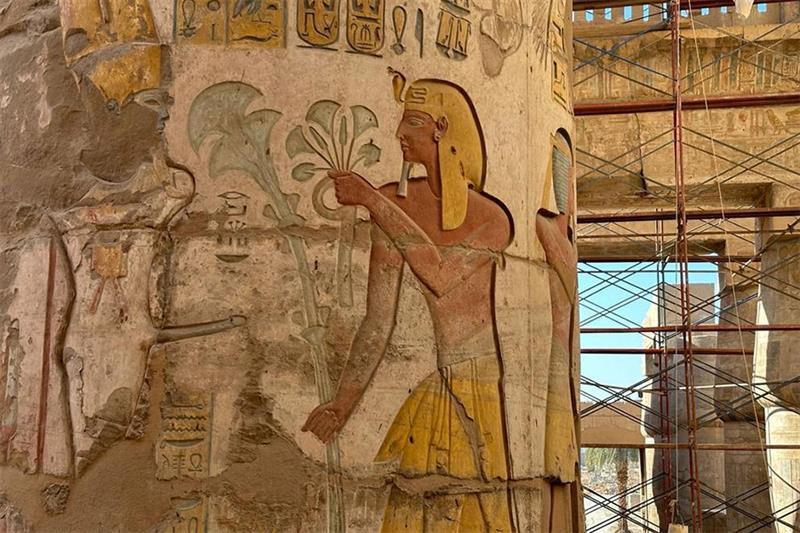Situated within Luxor’s iconic Karnak Temple, an impressive 95 percent of the columns in the Great Hypostyle Hall have undergone restoration, successfully reinstating the original engravings and colors of the ancient Egyptian inscriptions. Egyptian restorers from the Supreme Council of Antiquities (SCA), in collaboration with graduates from Luxor and South Valley Universities and the Luxor Restoration Institute, led the restoration of Karnak. Mostafa Waziry, SCA’s secretary-general, reported that the team effectively polished the columns, eliminating accumulated sand and dust to reveal the original engravings and colors. The restoration adhered to global conservation standards, with the second phase promptly commencing upon completing the first. “For the first time, visitors of the Karnak’s Hypostyle Hall will be able to admire its original scenery,” Waziry told Al-Ahram. He added that the initial phase of the project commenced in July 2021, focusing on the restoration of 28 columns within the Great Hypostyle Hall. This represents a significant step, considering there are a total of 134 columns in the hall, each towering at a height of 20 meters. Karnak, situated on the east bank of Luxor in Upper Egypt, stands as the largest and most…
Karnak Temple’s Great Hypostyle Hall Returns to Glory After Restoration of 95% of its Columns
January 21, 2024



